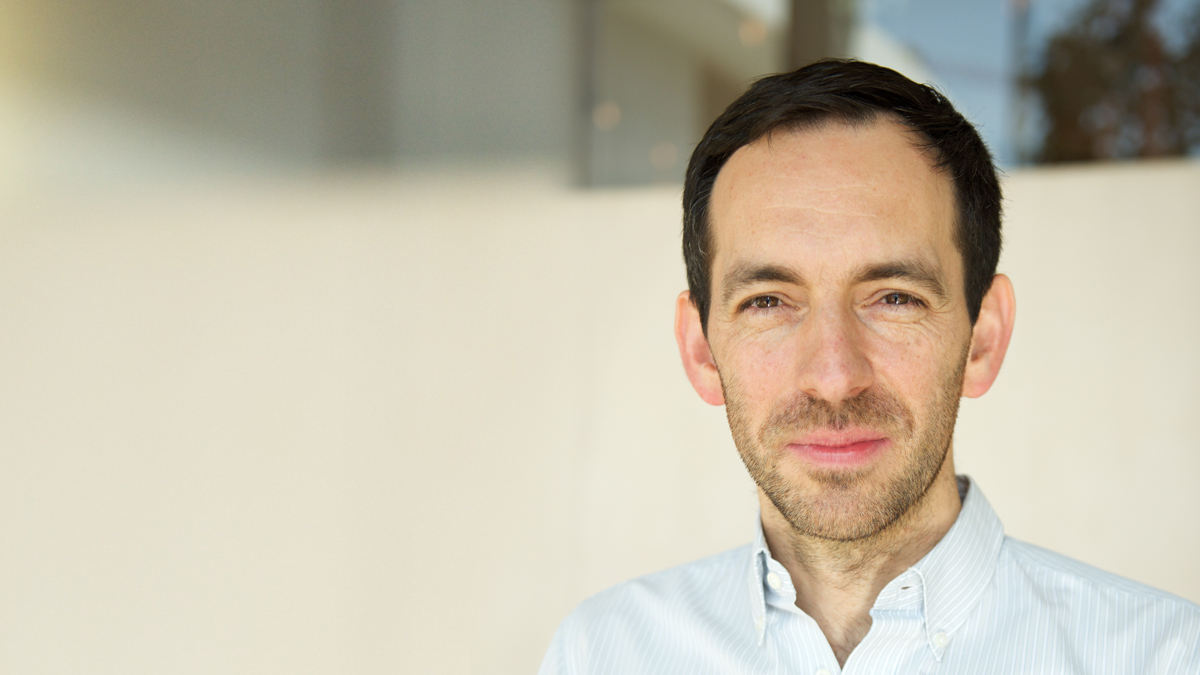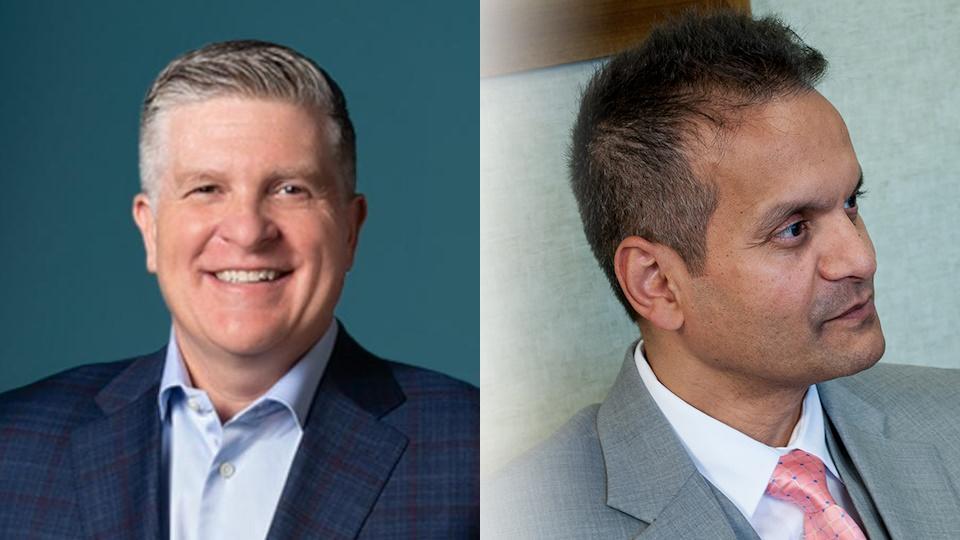The calm after the storm: How COVID-19 is making pharma more resilient

COVID-19 is proving to be the perfect storm in terms of the supply of pharmaceutical products. But learning how to overcome the challenges of 2020 will serve the industry well for years to come. As part of our EU Leader series, Christian Pawlu, head of strategy, portfolio and BD&L at Sandoz, told us about how securing supply in a time of crisis will ensure future access, build resilience, and transform relationships.
Since the start of the year, pharmaceutical companies have been riding a rollercoaster of challenges. Pawlu describes a “perfect storm” as the various strands came together to threaten supply chains.
“First, we saw a doubling or tripling of usual demand for a lot of our products. At the same point, there were big worries about supply chains in China.
“Then, as we went further into the crisis, there were some almost protectionist moves in some countries, as they placed or considered export bans on active pharmaceutical ingredients (API).”
Navigating this rapidly evolving landscape presented a challenge, but not an insurmountable one, Pawlu says.
“The industry, and our company in particular, always has business continuity plans in the drawer. But never in recent history have we had to pull out strategies for so many of our products and subsidiaries at the same time and put them into place.”
Daily calls with supply chain colleagues, activating second sources and alternative supply chains, along with strategic API and finished product stockpiling, all contributed to an absence of any major disruptions.
“For us, the crisis was also a reminder of our purpose as a company: to provide and pioneer access to the patient. We were the first company to commit to keeping prices stable for drugs seen as essential treatments for COVID-related symptoms.
“We made a commitment early on that we would not want to benefit from any shortages. In addition, we have made a commitment to provide 15 drugs to low-income countries at cost.”
Remote pharma
COVID-19 has fundamentally changed the way all sectors work on a day to day basis, but pharma did not have the luxury of time in allowing these changes to bed in.
Within a week, all 100,000 employees at Sandoz and parent company Novartis had transitioned from office to remote working, a process Pawlu describes as relatively “frictionless”.
“The biggest challenge was the interaction with our customers, because we weren't able to see healthcare providers physically anymore. But, in the end, that turned out to be an opportunity.”
Before the pandemic, Sandoz was able to reach around 15% of its customers digitally, but that has now increased to around 70%.
As people adjusted to connecting digitally, through Zoom, Microsoft Teams, and other video-based software, in their private lives, this expanded into their professional lives, says Pawlu.
“Traditionally, the way we interact with our customers has been a big barrier to conveying messages, particularly in off-patent pharma.”
While using digital channels will not necessarily be easier, it will make companies think differently about how best to interact with healthcare professionals, Pawlu believes.
He says: “The key question we need to ask ourselves is, if we have more access to physicians, how do we want to use it? More reach? More efficiency?
“We are working through this as we speak and are thinking how we complement or even replace the traditional channels, and how we can reach customers we haven’t reached so far. It's exciting.”
As the industry moves from a face-to-face to digital communication model, it needs a change of mindset, he adds.
“A physical person showing up in a physical office is the old normal.
“As an industry, we will have to be a bit more honest with ourselves. We'll be much better able to see where we get access, where we have a really deliverable message, and when we elicit a response or an active request for follow up, rather than measuring it by the time people spend with the customer.”
Resilient future
Another change Pawlu hopes is here to stay is the increased communication and collaboration between industry and policy makers.
This is, in part, thanks to a greater appreciation of the importance of resilient supply chains, he says.
“Over the last 30 years, the volume of products produced in Europe versus Asia has flipped. The majority of APIs and an increasing share of FDF is currently being manufactured in Asia,” explains Pawlu, adding that this was driven, particularly in generics, by price.
“I think the balance we need to keep in mind is cost, quality, and resilient supply. You can optimise all three, but you can only maximise two at the same time.
“If you can go for the highest quality and resilient supply, you will have to pay a higher cost, or you do it the other way around – of course we never want to compromise on quality.”
Supply chain issues during the pandemic have brought this argument into sharp focus, and it is now “on the radar” at an international level.
“Sandoz has been in contact with heads of governments across Europe, and I'm extremely happy that this topic has gained so much attention,” he says, adding that the European Commission has committed to developing a continent-wide pharma strategy.
Back in July, Sandoz announced that it had entered a partnership with the Austrian government to keep production of penicillin at the company’s Kundl facility – the last remaining integrated production chain for antibiotics in the western world.
“Austria is something that's been very visible, but we're having similar discussions on other product areas with other governments,” Pawlu says.
Ultimately, 2020 has been a challenging time for pharma, but it has also presented a myriad of opportunities to learn and evolve.
For Pawlu, COVID-19 has highlighted how we transform the way the industry works – from manufacturing and supply chains, to sales and detailing – in a way that ensures everyone can access the high quality, affordable medicines they need to live happier, healthier lives.
About the interviewee
 Christian Pawlu is the global head, strategy, portfolio and BD&L for Sandoz and a member of the global Sandoz Executive Committee. Christian studied medicine in Germany, Canada and France and is a licenced physician. Before he joined Sandoz, Christian was a start-up entrepreneur. He was a partner at McKinsey & Company where he specialised in pharmaceuticals and medical products with a focus on generic drug manufacturers. Prior to joining McKinsey, Christian was a neuroscience researcher at the university of Freiburg, Germany. Christian is married to a professor of medicine and they have three children.
Christian Pawlu is the global head, strategy, portfolio and BD&L for Sandoz and a member of the global Sandoz Executive Committee. Christian studied medicine in Germany, Canada and France and is a licenced physician. Before he joined Sandoz, Christian was a start-up entrepreneur. He was a partner at McKinsey & Company where he specialised in pharmaceuticals and medical products with a focus on generic drug manufacturers. Prior to joining McKinsey, Christian was a neuroscience researcher at the university of Freiburg, Germany. Christian is married to a professor of medicine and they have three children.
About the author
 Dr Paul Tunnah founded pharmaphorum in 2009, which combines industry leading publications (www.pharmaphorum.com) with a specialist strategy and content marketing/communications consultancy (www.pharmaphorumconnect.com). He is a recognised author, speaker and industry advisor on content marketing, communications and digital innovation, having worked with many of the world’s leading pharmaceutical companies and the broader ecosystem of healthcare organisations.
Dr Paul Tunnah founded pharmaphorum in 2009, which combines industry leading publications (www.pharmaphorum.com) with a specialist strategy and content marketing/communications consultancy (www.pharmaphorumconnect.com). He is a recognised author, speaker and industry advisor on content marketing, communications and digital innovation, having worked with many of the world’s leading pharmaceutical companies and the broader ecosystem of healthcare organisations.
In June 2020, he became chief content officer for Healthware Group, a next-generation integrated consulting group that operates at the intersection of the transformation of commercial operations and digital health, offering a unique range of services combining design, strategy, communication and innovation with technology and corporate venturing.
Connect with Dr Tunnah at https://www.linkedin.com/in/paultunnah/ or https://twitter.com/ptunnah












